Technology lesson notes Subject : “Minerals. Malachite Box."
Target : Making a box using the applique technique.
Educational task : Familiarize yourself with minerals; Using malachite as an example, study its beneficial properties.Developmental task : Development of horizons, attention, creative thinking. creative imagination.Educational task : Foster a work culture.Equipment : for teachers - PC, tech. map, presentation; for the student - glue, template, cardboard, paper leaves.Lesson steps
- The bell rang.The lesson begins.They looked at each otherThey smiled and sat down quietly.- Good mood? I wish you a successful day, joyfully accept everything that we will study, and I will help you with everything.- So, let's start the lesson. Are you wondering what we will do in class today? To find out what we will be working on, look at the slide.The slide shows malachite, malachite products, malachite boxes.- What kind of stone is depicted? Who knows what it's called?- This is a very amazing and mysterious stone. There are legends and tales about him. For example, the great writer P.P. Bazhov wrote fairy tales and one of them was “The Malachite Box.” A cartoon was created based on it, a fragment from which we will now look at.Viewing a fragment from the cartoon “The Malachite Box”.- What are boxes used for? Today in the lesson we will make our own boxes to store your office supplies. Look at my box. What is it decorated with? In what rhythm are my pieces of paper glued? What figures are at the heart of this box? How are they connected?- Where should we start making the box? What will we do next? What will we do after this? What else can we decorate our box with? What tools will we use? Let's remember TB with scissors; with glue.Working with a drawing.- What lines do you see? What does the solid line mean? What does the dotted line mean?- When is it better to make decorations, before or after? Why?Doing practical work. At this time, the teacher walks around the class, checks the correctness of the students’ work and distributes evaluation tokens (red square - 5, green - 4, yellow - 3).Analysis of works. Show each other's work in rows.- Those who received a red square on the board with their works will leave.- Why did the guys come to the board with their products? How was this work done? They did an excellent job and received an excellent grade for the lesson.- What new did you learn in class today? What did you learn in the lesson? What did you like most? Did not like? Why?- Guys, you did great today! We worked well in class, learned a lot and learned a lot. Thanks for your work, lesson is over.- Your homework will be to make the same box, photograph it and show it to us. Capture students' attention.Get students ready to work.
Slide No. 1,2,3
Showing a fragment from the cartoon “The Malachite Box”.
“Demonstrative pronouns in English” - these. Those are clocks. Remember. These are cats. English language, 4th grade. These are frogs. Demonstrative pronouns. This is a refrigerator. That is a TV-set. Company Logo. Those are bananas. This is a clock. that. This is an apple. those. this. That is a book.
“Problems “Quadrilaterals”” - The investigation is conducted by geometry experts. Trapezoid. Connoisseurs. Rhombus. Work in groups. A series of mysterious incidents. Drawing up guidelines. Gang. Quadrangle. Parallelogram. Opposite parties. Types of trapezoid. Draw of lots. April. Graphic dictation. The order of solving problems. Mathematical relay race.
“Site Design” - Web surfers. Traveling the web. Web analytics. Project manager. By now we already know how a Web site differs from a regular one. Information architects. Criteria for evaluation. How to make a website for the Internet. Site development. Instructions for completing the Web quest. Report protection plan. Website design.
“Comets, asteroids, meteorites” - A meteorite is a solid body of cosmic origin that fell to the surface of the Earth. Meteorites. Many of the comets belong to so-called families. What are comets themselves? The committee has a large meteorite collection. The meteor body enters the Earth's atmosphere at a speed of about 11-25 km/sec.
“Subtracting and Adding Prime Numbers” - Equation. Addition and subtraction of natural numbers. Oral work. Subtracting a sum from a number. Formulate the laws of addition. Perform the addition in the most convenient way. Working with the textbook. Subtraction of natural numbers. Find the perimeter. Find the perimeter of the polygon.
“Examples of plants” - Using amber. Seaweed. Green mosses. Flowering plants. Amber. Moss habitats. Mosses. Chlamydomonas. Golden algae. Prickly spruce. Brown algae. Coniferous plants. Red algae. Diversity of plants on Earth. The night before Midsummer. Cypress pea fruit. Teacher's work.
There are a total of 23,687 presentations in the topic
Lesson about the surrounding world in 3rd grade on the topic "Minerals"The purpose of the lesson: Reveal the role of minerals in human activity and show the need for their careful use.
Lesson objectives:
Educational:
Familiarize yourself with the variety of minerals and some of their properties, methods of their extraction;
Organize schoolchildren’s research into the basic properties of minerals;
Show their important role in the country's economy.
Developmental task:
Development of the ability to analyze and build hypotheses, conclusions, and evidence based on analysis.
Develop skills in drawing up diagrams and tables.
Educational:
Show the need to protect mineral resources;
Maintain awareness of the involvement of each student in the result of joint learning activities.
Foster tolerance.
Lesson type: subject
Lesson format: lesson-research.
Form of organization of educational activities: individual - group , frontal.
Methods: partially search, research.
Terms and concepts: minerals, geologists, deposits, quarry, mine.
Equipment: multimedia projector, screen, hammer, collection of fossils, pieces of glass, nail, glass of water, white paper, magnifying glasses.
Didactic materials: teacher presentation, rocks, instruction card for studying the properties of minerals.
During the classes
Stage 1. Organizing time. Psychological mood.
Look at each other, with your eyes, wish your friend a good working mood for the entire lesson. Now look at me. I also wish you all an interesting lesson.
Stage 2. Motivation and goal setting.
Look at our Earth. The nature of our Earth is rich and diverse. Some riches are on the surface of the Earth, others are hidden deep in the Earth. (slides 1, 2, 3).
What cunning secrets
Common items melt:
Minerals sparkle in the salt shaker!
Snowflakes are crystals!
The foil that hid the candy -
The metal is the same as in rockets.
Simple clay conceals it,
Sister of sapphire and ruby!
And if you trip over a stone,
Don't think that the cobblestone is to blame,
And here is omnipotent nature
They gave you a breed!
What kind of riches and secrets do you think we will talk about today?
Read the topic of the lesson. "Minerals" (slide 4).
What problems do we need to uncover on this topic? What questions should we ask ourselves?
(What minerals do we know? Where are they located? How do people use them in their lives? How should minerals be protected? How are they mined?)
What problem do we pose in class? ( Why do minerals play a big role in human life?)(slide 5).
Why do we need to know this?
How will we find out the unknown about minerals? How will we work? ( working in groups).
Stage 3. Planning to find a solution.
You are placed in groups of 5 people.
What is the first step for coordinated work in groups to find answers to all the questions posed? ( distribute roles in the group: organizer, secretary, informants).
Stage 4. Implementation of the plan.
Frontal work.
Study. What are “minerals” and “fossils” (slide6).
Now work in a group and try to define “Minerals”.
(“Minerals” are natural resources that people extract from the depths of the earth and its surface and use). (slide7).
- If we know what minerals are, then in order to know how to use them, where to apply them, what else do you think we should know about them? (properties). (slide8).
Each mineral has some property. Now we will identify these properties - examine them and enter them into a table. Envelope No. 1.
Properties of minerals.
Name
State
Color
Main property
Where is it used?
Liquid; light; oily
brown
flammability
Coal
Solid; heavy
flammability
Very hard
heavy
red, gray, white
strength
construction
Oil(slide9). Study. Show the teacher experiments and fill out the table. Conclusion (slide 10).
Coal.
Explore according to plan (slide 11).
Plan for studying the properties of coal.
1. Examine a sample of coal. Determine its color. Does it have shine?
2. Place the piece in water. Does he float on its surface or sink?

3. Run your fingernail over the rock.
If a trace remains, then the rock is soft;
If you can scratch it with a nail, then it is hard;
If there is no nail mark, then it is very hard.
4. Coal is hard, but suppose it is brittle. Prove it! Find a way to prove it.
5. Where is it used and based on what properties?
Compare these two minerals using the table.
Plan for studying the properties of granite(slide 12).
1. Examine a piece of granite through a magnifying glass. Determine what color and what it is made of? Think about what fruit it looks like and why is it called granite?
2. Determine whether water is lighter or heavier?
3. Compare the hardness of granite and the hardness of coal, leaving scratches on it with a fingernail or nail.
4. Make sure granite is especially durable. Run granite and charcoal across the glass. What will leave a mark or scratch on the glass (charcoal or granite)?
Conclusion from the table about granite.
Let's compare coal and granite in the table.
Fizminutka(slide 13).
They walked and walked along the path,
We found a lot of stones.
We sat down, collected ourselves and moved on.
Along the path, along the path
Jump on the left leg
And along the same path
We jump on the right leg.
We'll run along the path and reach the lawn.
On the lawn, on the lawn
We'll jump like bunnies.
Stop! Let's rest a little!
And we’ll go to work again!”
We continue to work. We still have a lot to learn.
So, knowing the properties of minerals, what can we now learn? ( where is it used and how is it mined)
Stage 5. Work according to the textbook. From 49-50. Appendix: Envelope No. 2.(see at the end of the article)
Who do you think geologists are?
Now each group will be geologists - scouts. You go on exploration and in a few minutes tell us about the methods of mining. The textbook will help you with this envelope No. 2.
Each geological group has its own task. You will begin your story with the words: “We are geologists just returned from an expedition...” There is also additional information to help with your text. Use it.
Before the stories, let's work with the concepts: (slide 14).
Geologists – people engaged in the study and search of minerals.
Place of Birth - places where minerals lie in the depths of the earth and on its surface.
Quarry – This is an open pit.
Mines – These are deep wells.
(Children read prepared messages) (slide 15,16,17,18,19,20,21,22).
Now, based on your stories, we will draw up a small diagram - a “spider” (slide 23).
Why do people need minerals and where do they use them?

Guys, two ovals have not been studied. To study them, let's listen to the messages. (Children talk about salt and natural gas) (slide24,25,26,27).
Stage 6. Careful use.
- Can our economy manage without natural resources?
- Minerals are the source of our life.
Tell me, what will happen if minerals disappear from our Earth?
What should a person do to make good use of the wealth of underground storehouses?
Stage 7. Conclusion(slide 28,29).
Minerals are the treasure of our Earth. Therefore, like any other treasure, they need to be protected and protected. The mineral reserves on Earth are not endless. It is necessary to properly and carefully treat underground wealth that cannot be restored. How will you and I carefully use these riches?
Stage 8. Reflection(slide 30).
- What tasks were set at the beginning of the lesson?
Do you think we coped with the task in class?
What helped us in our work?
What discoveries did you make for yourself?
Stage 9 Job evaluation.
Group assessment.
Stage 1 Homework(slide 31)
Raise your hand if you wanted to learn more about minerals after the lesson and prepare a report.
There are many more minerals on earth. So I suggest you prepare a message about the mineral resources of the Novosibirsk region.
If someone finds it difficult, then I suggest to those children to prepare a message about any mineral.
Application to the lesson. Envelopes.
Task for group 1. Coal.
Coal is called hard coal because it is hard and has long been considered a stone. But in fact, coal was formed from ancient plants. But then people came and saw these deposits. Coal is mined in two ways: open - mining in a quarry, and closed - mining in mines.
Quarry – This is an open pit.
Mine – this is a deep well.
Coal is one of the most essential minerals. He heats the house, gives his human friend medicine. Without coal it is impossible to smelt metal or cook food. They also make perfumes and various fragrant syrups from it..
Group 2 assignment .Oil.
Our country is very rich in oil. Until now, scientists have not come to a consensus on how I was formed. Many argue that over hundreds of millions of years, the substances that once made up algae, fish and crustaceans turned into oil. It is now impossible to survive without oil in the modern world. More than a thousand substances are made from this oily brownish liquid. For example, the purest gasoline for aviation and lubricating oils for cars. Petroleum is used to produce perfumes, medicines, photographic films, and plastics that can be used to build houses and make cars.
In order to extract oil, drilling rigs are built and deep wells are drilled.
Task for group 3. Iron ore.
For a long time, people have been looking for deposits of ores containing various metals. Iron, cast iron, and steel are smelted from ferrous metal ores. And from non-ferrous metal ores - aluminum, copper, zinc, lead. As a rule, products are made not from pure metals, but from alloys. There are so many metal objects around us: scissors, spoons, pots, buckets... and machine tools in factories, airplanes and cars, trains on rails, and the rails themselves. All this is made of metals! And the metals are obtained from ores mined in nature.
Task for group 4. Construction Materials. Sand, clay, limestone.
Sand is a loose rock consisting of tiny particles. This is a product of the destruction of hard rocks. Indispensable in glass production and road construction.
Clay is a widely used building material. Brick is made from clay. They also make beautiful porcelain and earthenware dishes. Clay is formed as a result of weathering of various rocks. In water it gets wet, becomes viscous and plastic.
Limestone lies in the ground in huge layers. An ordinary stone of white or gray color. Sometimes entire mountains are made of it. Used in construction. They write on the blackboard with chalk. The walls are whitewashed. Used in the construction of houses.
Can what you see be called wealth? Please clarify what kind of wealth this is and who owns it?
Where are these riches?
Is it possible to find treasures only on the surface of the Earth?
- What do we call minerals?
Teacher's message
Minerals are mineral formations of the earth's crust, the composition and properties of which allow them to be used as raw materials or fuel. There are solid, liquid and gaseous minerals.
Minerals are found in the earth's crust in the form of clusters that are their deposit. Today we will go to one of the fields.
Mystery.
- What did you learn about this mineral in the lessons of the surrounding world?
Student messages
- Oil was formed from the remains of plants and animals that lived millions of years ago, underground.
- Oil is a thick, oily liquid. It has a pungent smell. When it gets into the water, it spreads into a thin film on its surface.
- People knew about the existence of oil in ancient times. Sometimes when digging a well, instead of water, a dark oily liquid with a pungent odor came out of the ground - oil. This liquid had a remarkable property - it burned beautifully. It was poured into lamps, used in warfare to make “fire arrows” and “fire pots”, and used to lubricate wheels and mechanisms. This was the case until the engine was invented.
Teacher's message
Today, oil is one of the most important minerals for humanity, which is used to produce gasoline, kerosene, plastics, paints, fabrics, medicines, etc. It is considered "black gold", in price it is not inferior to yellow metal.
Exercise 1.
- What profession do people search for deposits? ( geologists)
- Find oil fields on the map of Russia. (Sakhalin Island, Yamal Peninsula, Western Siberia)
- Who is replacing geologists? ( drillers)
- Drillers are building drilling rigs and drill deep wells. Drilling wells is one of the main operations in oil production. Special pumps pump oil into oil storage facility, and then by pipeline am, on special vessels - tanker ah or in tank x it is delivered to oil refineries.
Task 2.
Look at the photographs and determine what technological operations for oil production and transportation are depicted on them?
Task 3.
- Take a close look at the design of the drilling rig. A drilling derrick is a structure above a well designed for lowering and raising drilling tools, instruments, and pipes. In its shape, it resembles a pyramid, sometimes as high as a 13-14-story building. It has 4 legs on which three platforms are attached. For greater strength, the legs are fastened together with special drafts. The parts of the drilling rig are made of pipes, and during assembly they are connected with bolts.
Task 4.
-Which material is best for creating a model of a drilling rig? Why? What should the tower be like? (stable, mobile, strong)
Task 5.
What form of work will you choose? Why? Distribute responsibilities.
Task 6.
-Consider the model of a drilling rig. Determine which parts of the designer are necessary for its manufacture, select these parts. Select the tools you need to assemble the model.
Task 7.
- Independent drawing up of a work plan based on the drawing. Product assembly.
Task 8.
Diagnostics of the quality of mastering the topic
- Complete the sentences:
Black gold is ……………………………………………. .
A drilling derrick is a structure above ……………………., intended for ……………………………………………..
2.Draw a symbol that represents oil on the map.
- Identify and underline the names of the professions of people who are involved in oil production:
Miner geologist driller pharmacist
- Determine the sequence for oil production and transportation:
… Drilling of the wells;
... Search for oil fields;
… oil transportation via pipelines;
…preparing fields for development.

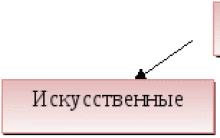
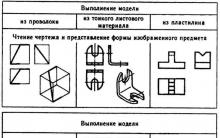
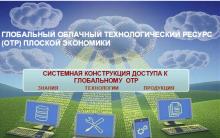
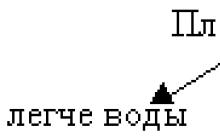
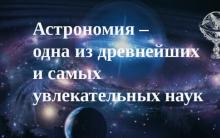
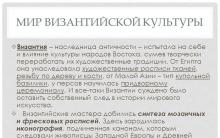




Best International Art Gallery
Chinese Pilot Jao Da
What does the budget classification of the Russian Federation include?
Minister of Finance of the Russian Federation Anton Siluanov
How to calculate mineral extraction tax for gas, sand, oil, coal (mineral extraction tax)?